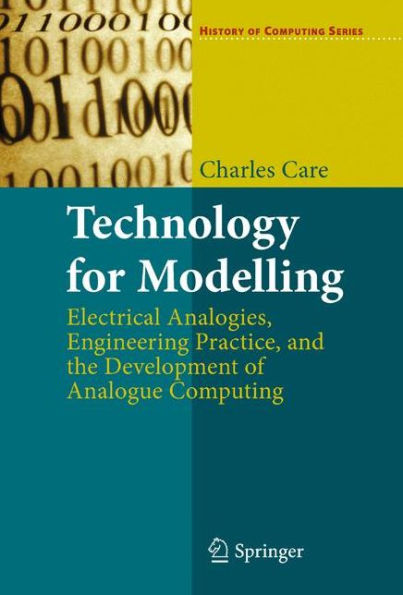Technology for Modelling: Electrical Analogies, Engineering Practice, and the Development of Analogue Computing
Historians have different views on the core identity of analogue computing. Some portray the technology solely as a precursor to digital computing, whereas others stress that analogue applications existed well after 1940. Even within contemporary sources, there is a spectrum of understanding around what constitutes analogue computing. To understand the relationship between analogue and digital computing, and what this means for users today, the history must consider how the technology is used. Technology for Modelling investigates the technologies, the concepts, and the applications of analogue computing. The text asserts that analogue computing must be thought of as not just a computing technology, but also as a modelling technology, demonstrating how the history of analogue computing can be understood in terms of the parallel themes of calculation and modelling. The book also includes a number of detailed case studies of the technology's use and application. Topics and features: discusses the meaning of analogue computing and its significance in history, and describes the main differences between analogue and digital computing; provides a chronology of analogue computing, based upon the two major strands of calculation and modeling; examines the wider relationship between computing and modelling, and discusses how the theme of modelling fits within the history of analogue computing; describes how the history of analogue computing evolved through a number of stages of use; presents illustrative case studies on analogue modelling in academic research, oil reservoir modelling, aeronautical design, and meteorology. General readers and researchers in the field of history of computing – as well as history of science more generally – will find this book a fascinating insight into the historical use and evolution of technology. The volume provides a long-needed historical framework and context for these core computing technologies. Dr. Charles Care is a seniorsoftware engineer at BT and an Associate Fellow at the Department of Computer Science of the University of Warwick, UK.
1110931310
Technology for Modelling: Electrical Analogies, Engineering Practice, and the Development of Analogue Computing
Historians have different views on the core identity of analogue computing. Some portray the technology solely as a precursor to digital computing, whereas others stress that analogue applications existed well after 1940. Even within contemporary sources, there is a spectrum of understanding around what constitutes analogue computing. To understand the relationship between analogue and digital computing, and what this means for users today, the history must consider how the technology is used. Technology for Modelling investigates the technologies, the concepts, and the applications of analogue computing. The text asserts that analogue computing must be thought of as not just a computing technology, but also as a modelling technology, demonstrating how the history of analogue computing can be understood in terms of the parallel themes of calculation and modelling. The book also includes a number of detailed case studies of the technology's use and application. Topics and features: discusses the meaning of analogue computing and its significance in history, and describes the main differences between analogue and digital computing; provides a chronology of analogue computing, based upon the two major strands of calculation and modeling; examines the wider relationship between computing and modelling, and discusses how the theme of modelling fits within the history of analogue computing; describes how the history of analogue computing evolved through a number of stages of use; presents illustrative case studies on analogue modelling in academic research, oil reservoir modelling, aeronautical design, and meteorology. General readers and researchers in the field of history of computing – as well as history of science more generally – will find this book a fascinating insight into the historical use and evolution of technology. The volume provides a long-needed historical framework and context for these core computing technologies. Dr. Charles Care is a seniorsoftware engineer at BT and an Associate Fellow at the Department of Computer Science of the University of Warwick, UK.
169.99
In Stock
5
1

Technology for Modelling: Electrical Analogies, Engineering Practice, and the Development of Analogue Computing
203
Technology for Modelling: Electrical Analogies, Engineering Practice, and the Development of Analogue Computing
203
169.99
In Stock

Product Details
| ISBN-13: | 9781848829473 |
|---|---|
| Publisher: | Springer London |
| Publication date: | 07/07/2010 |
| Series: | History of Computing |
| Edition description: | 2010 |
| Pages: | 203 |
| Product dimensions: | 6.10(w) x 9.25(h) x 0.36(d) |
From the B&N Reads Blog
